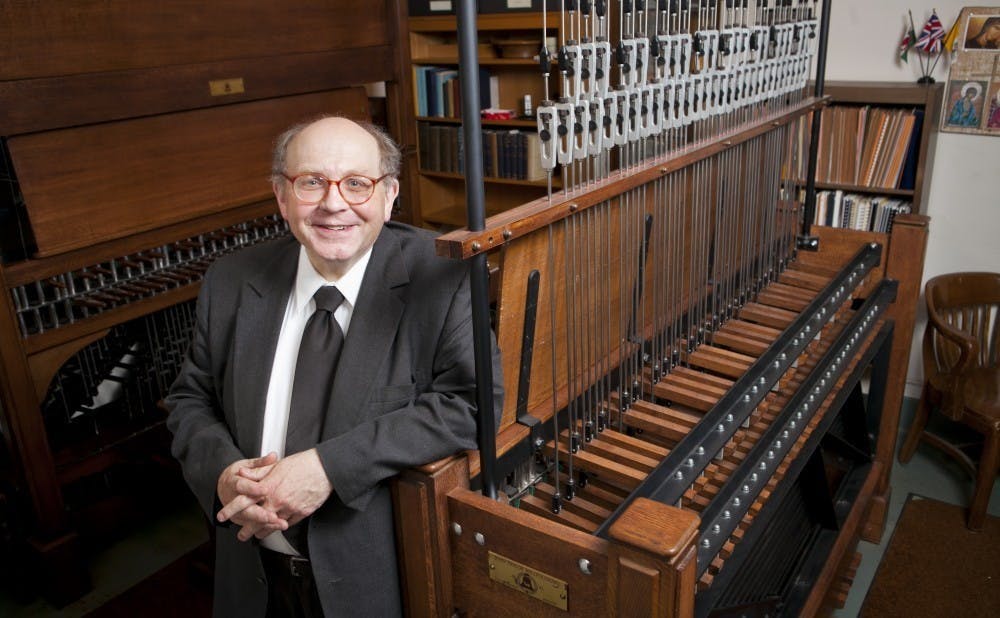J. Samuel Hammond, the man behind the Duke Chapel’s near-daily tolling of the bells for 53 years, died Feb. 25.
Hammond had played the chapel’s carillon since his first year as a Duke undergraduate in 1964. He was named chapel carillonneur in 1968 and university carillonneur in 1986, a role he served in until his retirement in 2018. His music could be heard at 5 p.m. on weekdays and before and after Sunday worship services.
In addition to these roles, he worked in the Duke Libraries until 2012 as a music librarian and rare book cataloger.
“He was this gentleman, a man of great dignity and respect for others, faithful, wise, witty,” said Luke Powery, dean of the Duke Chapel.
Powery, who has worked at Duke for eight years, said that Hammond welcomed him to the Chapel community with open arms. He fondly recounted Hammond’s “southern charm” and the way he respected those around him.
“This says a lot about him: he would always call me Mr. Dean,” Powery said. “He would tip his hat or sort of bow.”
Powery described Hammond as a man dedicated to his work with a deep faith in God and a love for Duke. Because of his deep respect for others, Hammond often took an interest in the work of his friends and colleagues, Powery said.
In his first year at Duke, Powery wrote a book on spirituals and preaching. Shortly after its publication, Hammond wrote a complimentary note to the author, attaching a photocopy of a particular section from the book. “He took interest in something I had written and wanted to have a conversation about it,” Powery said.
This encounter served as inspiration for Powery to publish another book, this one a collection of spiritual devotions for the season of Advent. “I dedicated that to Sam, and I say a little bit about him in the preface, because he took interest in who you were as a person or as a scholar or whatever it might be,” Powery said.
J. Andrew Armacost, head of collection development and curator of collections at Rubenstein Library, recounted working with Hammond over the years. Armacost came to Duke in 2005 to serve as the curator for what is now the Rubenstein Library, while Hammond was working as a rare book cataloguer. He said that Hammond taught him a lot about many of Duke’s book collections.
The two worked together on many different library projects, many of which involved teaching others about Duke’s collections. Armacost said that Hammond loved interacting with students.
“He always had extra special time and made a special effort to show students something special in the collections,” Armacost said. Hammond routinely hosted classes, such as those teaching from the Greek and Latin manuscripts held on site, some of the oldest pieces in the Rubenstein collection.
Hammond took pleasure in helping students find particular works in the archives. He also often invited students to visit his workspace in the Chapel’s bell tower or took them all the way to the top to look out at West Campus, Armacost remembered.
“I think that was a favorite thing he could do for students,” Armacost said.
Armacost said that Hammond also taught him a lot about music, especially the libraries’ collections of hymnology and sacred music. “That would sometimes lead to things he would get to play, or he would incorporate pieces that were from the collection into the 5:00 ringing,” Armacost said.
Powery told a story that similarly emphasized Hammond’s deep commitment to his work.
As Powery was driving to work one day, he turned onto University Road, where he spotted Hammond walking alongside the street, despite the lack of a sidewalk. Hammond was dressed in his usual black sporting hat, tie and jacket, and Powery wondered why he was walking to work. He asked Hammond if he wanted a ride, and Hammond declined the offer, an interaction Powery said embodied Hammond’s can-do attitude.
“He just had that deep commitment to his calling,” Powery said.
He recalled seeing Hammond in a quiet, unassuming corner of the Chapel some days, simply praying by himself.
“[Hammond was] this man from another era almost, greeting you in such a gracious way, and had a sense of holiness, is the word I would use,” Powery said.
Get The Chronicle straight to your inbox
Sign up for our weekly newsletter. Cancel at any time.
Powery also viewed the long-time carillonneur as an iconic Duke figure in his own right. “He knew these luminaries, the professors people talk about from the past. If you were touching Sam, it was like you’re touching Duke history,” Powery said.
Hammond is survived by his wife, Marie, and their two sons. A memorial service will take place at a later date.

Parker Harris is a Trinity senior and an editor at large of The Chronicle's 118th volume.

